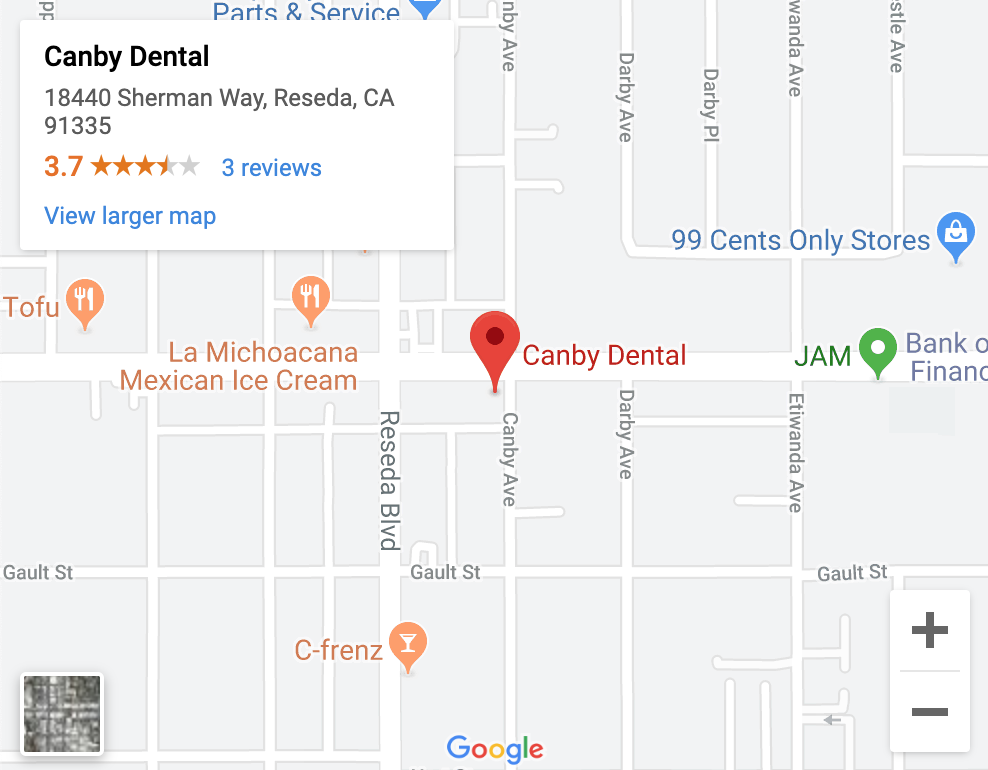A person’s wisdom teeth are usually the last ones to erupt and this typically happens between the ages of 17 and 21. By that time, there may not be enough room in the mouth for the wisdom teeth to grow in properly. As a result, wisdom teeth might try to come in sideways, or they might only partially erupt. In other cases, the wisdom teeth are blocked from coming in and become impacted. This can cause pain, discomfort, infection or even facial swelling. It may be necessary for your dentist to remove the wisdom teeth if this happens.
Wisdom Teeth Removal in Reseda, CA
Leaving problem wisdom teeth in place can cause a number of issues. A wisdom tooth can cause shifting of nearby teeth in the mouth, pain in the jaw, and may interrupt the normal function of the sinuses. Your dentist will conduct a thorough examination to make sure that wisdom teeth removal is the right procedure for your specific case.
The dentist might prescribe antibiotics before the procedure, to clear up any infection in the surrounding tissues. Because wisdom teeth removal is a painful procedure, most patients require sedation. The dentist makes an incision in the gum tissue to expose the wisdom tooth. Some bone may be removed to expose the roots of the tooth. The tooth is then directly extracted, or in some cases, the tooth will be divided into sections for removal. The surgical site is then cleaned and stitches may be applied to close the wound.
Because extracting wisdom teeth involves surgery, there are several risks involved with the procedure:
- Pain, bleeding and swelling
- Lower lip numbness
- Persistent sinus opening
Recovery from Wisdom Teeth Removal
Initial recovery from having the wisdom teeth removed takes about five to seven days. The gums should be fully healed within three to four weeks. In rare cases, damage to the jaw can result from wisdom teeth removal, which can move the full recovery time up to about six months. Follow all of your dentist’s instructions to ensure that healing takes place as quickly as possible.
It’s normal to experience some bleeding within the first 24 hours after the procedure. To help the bleeding stop, your dentist will recommend biting down on a piece of clean gauze placed over the extraction site. This should make the bleeding stop within 45 minutes. If heavy bleeding occurs, or if the bleeding does not stop for an extended period of time, call our office right away. Also note that dissolving stitches may need to be used in the case of impacted wisdom teeth.
Some facial swelling is normal after having your wisdom teeth removed. Apply ice wrapped in a cloth to the swollen area for 10 minutes, then take it off for 20 minutes. This can be done as often as you need to in the first day after your wisdom teeth are removed. Over-the-counter pain medication can be used to manage pain during the recovery period. The dentist may also prescribe a continuing course of antibiotics, to ensure that infection doesn’t set in during the initial recovery phase.
Candidacy for Wisdom Teeth Removal
Dentists typically recommend removing “problem” wisdom teeth by the age of 18. The risk of complications from wisdom teeth removal increases once the patient is over the age of 35. For patients over 50, the risks increase greatly, because the teeth may have fused to the jawbone by then. Your dentist will take X-rays to determine the best course of treatment for you.
If you think your wisdom teeth are causing you problems, contact our office today to schedule an appointment.




